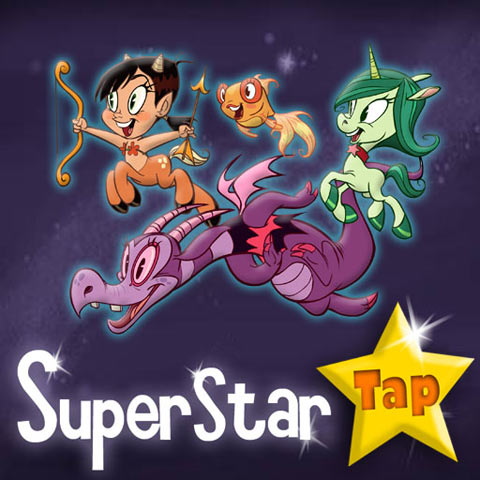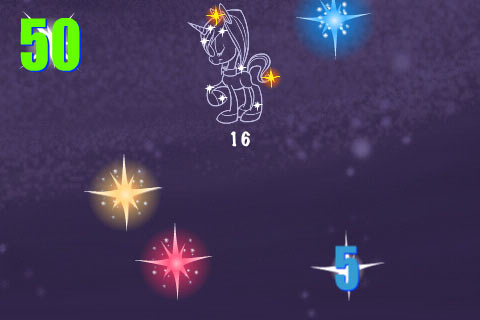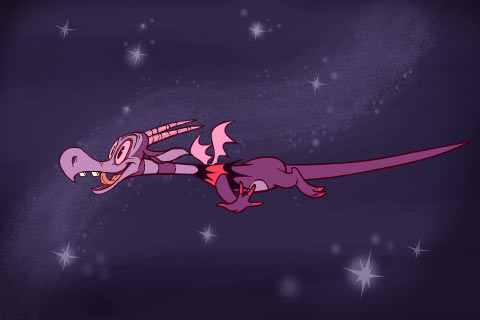

Interview: Chris Dainty and Super Star Tap

As the iPhone user base continues to expand, smaller animation studios and indie animators are discovering a promising new distribution platform. One example is Ottawa-based animation studio Dainty Productions, which recently released its first iPhone game, Super Star Tap (official Super Star Tap website or buy it at the iPhone app store). The game, which will be most appealing to the younger set, rewards players with handsome bits of animation as they complete each level. In this interview, I corresponded via email with game creator Chris Dainty about how they produced the game, creating games versus pitching ideas to studios, and the broader implications of iPhone games for the animation community.
Cartoon Brew: If I understand correctly, the game originally started out as The Constellations, which was an idea for an animated TV series. What inspired you to turn it into a game instead?
Chris Dainty: Jessica Borutski and I created the show concept in 2006. We had lots of positive feedback from the networks, but nothing materialized. We didn’t have enough time or money to invest in a full-out cartoon, and I couldn’t stomach shelving this idea. After looking into iPhone stats it seemed like the perfect vehicle to get the characters out there, stay independent, and hopefully make some revenue. Thirty million people have iPhones, twenty million have the iPod Touch, so there’s a lot of screens.
Explain the game briefly and how the animation plays a role in it. I noticed you’re also planning to offer expansion packs so you can introduce new characters from the universe over time.
CD: Super Star Tap is a puzzle game in which the player must tap the stars to unlock the constellations. The animation portion of the game is the reward the player receives for unlocking the constellations. If you tap the wrong star, it will glow (blue if you’re far away, red if you’re close) to help find the constellation star path. We will be releasing new levels every few months to keep the game new and fresh and keep people playing the game.
Talk a little bit about the production process behind the game. How many people were involved? How long did it take to produce?
CD: Dave McKenney (our programmer) used Cocos2D for the iPhone. It’s a free download from Google and it’s a framework for building 2D games. We then signed up for the developer program on Apple, which cost $100. Dave and I started with a rough idea of game play in August ’09, then tweaked as we did game testing. We had a working version by September. The character designs were done back in 2006 by the very talented Jessica Borutski. Everything was animated in Flash. I designed all the game menus in Photoshop, and my wife, Jennifer, worked as the project manager, game tester and did sound effects using the free program Audacity.

Do you view games a stepping stone to other media, like TV series, or is this the end product for your company now?
CD: Sure, eventually I’d like to see the characters in a TV show, but honestly I’d rather the success of this game drive broadcasters to me. I’m building my audience first through games so that it will help fuel the cartoons we want to produce.
If somebody has developed a project and they have the option of pitching it as a TV show or creating their own game, what do you think is the advantage (either creative or financial) of pursuing the game route?
CD: I highly recommend going the game route over pitching a TV show. I’m not a huge gamer, but I’m an entrepreneur that sees more value in selling a game on the app store than doing a song-and-dance for a network that only green lights two or three new shows out of the thousands of pitches they receive every year. Apple only takes 30% from sales of the game, while the rest is profit for us. It’s also a lot cheaper to produce games because two or three people can do it, and you have full creative control.

Were there any major difficulties or challenges you ran into while making the game? If somebody is thinking of making their own animated iPhone game, what pitfalls would you recommend they watch out for?
CD: The paper work is a bit daunting and can take a lot of time to get through. With tax forms, contracts to sign, banking info (if you’re Canadian you have to add a 0 in front of your bank number–don’t ask me why, but it was just one of the many things that slowed down the release of the game), it always takes longer than you think it will take to make it onto the AppStore. Many nights, I kept refreshing the screen staring at the words “in review,” but once it was for sale, wow, it’s the best feeling in the world.
What sort of a role could iPhone games and apps play for independent creators like yourself in the future?
CD: I think the iPhone has a lot of potential to help make independent animation profitable for individuals with creative and innovative ideas. Apple has made the app store accessible to everyone and this is huge for indie content creators who want to compete against the big companies out there. I also think that people getting into the mobile industry need to adapt as it changes. The way people pay for entertainment is constantly evolving. I think micro-transactions and freemium will play a big part for the whole of the entertainment industry from games to animation. One business model that I’d like to experiment with in the future is releasing exclusive mobile shorts that also include a small game.
